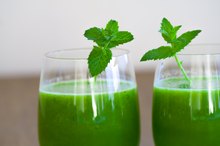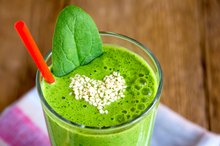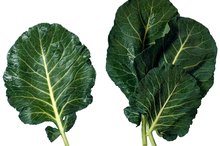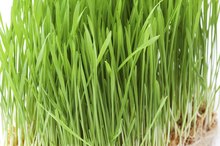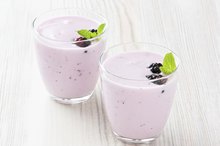What does fact checked mean?
At Healthfully, we strive to deliver objective content that is accurate and up-to-date. Our team periodically reviews articles in order to ensure content quality. The sources cited below consist of evidence from peer-reviewed journals, prominent medical organizations, academic associations, and government data.
- American Journal of Clinical Nutrition: Dietary Glycemic Index and Load in Relation to Risk of Uterine Leiomyomata in the Black Women's Health Study
- American Journal of Clinical Nutrition: Dietary Glycemic Index and Load in Relation to Risk of Uterine Leiomyomata in the Black Women's Health Study
- BMC Women's Health: Prevalence, Symptoms and Management of Uterine Fibroids: An International Internet-Based Survey of 21,746 Women
- Obstetrics and Gynecology: Diet and Uterine Myomas
- Obstetrics and Gynecology: Diet and Uterine Myomas
- International Journal of Women's Health: Uterine Fibroids: Current Perspectives
- International Journal of Women's Health: Uterine Fibroids: Current Perspectives
- Journal of Nutrition: Dietary Intake of Selected Nutrients Affects Bacterial Vaginosis in Women
- Journal of Nutrition: Dietary Intake of Selected Nutrients Affects Bacterial Vaginosis in Women
The information contained on this site is for informational purposes only, and should not be used as a substitute for the advice of a professional health care provider. Please check with the appropriate physician regarding health questions and concerns. Although we strive to deliver accurate and up-to-date information, no guarantee to that effect is made.
How to Juice for Vaginal Health and Fibroids
Uterine fibroids and inflammation of the vagina are common problems, especially among women of childbearing age. Uterine fibroids are noncancerous tumors arising from muscle tissue in the uterus. Inflammation of the vagina, known as vaginitis, is most commonly caused by an infection -- such as bacterial vaginosis (BV) or a yeast infection. Dietary changes have not been proven to cure uterine fibroids or vaginitis. However, some research suggests that certain foods and nutrients might affect the development and growth of uterine fibroids and influence your risk for infectious vaginitis. Including certain fruits, vegetables and other ingredients in your juice drinks might prove beneficial for your vaginal health and potentially influence the growth of uterine fibroids. Consult your doctor to discuss your specific dietary needs as they pertain to your health.
If you are experiencing serious medical symptoms, seek emergency treatment immediately.
Go Green
Green vegetable options for juicing include:
- kale
- spinach
- Swiss chard
- mustard greens
- lettuce
- bok choy
- collards
These veggies are not only rich in nutrients but are also low in calories and sugar. Maintaining a healthy weight is important as overweight and obesity increase the risk for uterine fibroids. The low sugar content in green juices might also be helpful for preventing infectious vaginitis, which has been associated with high sugar intake.
Squeeze Some Citrus
Side Effects of Juicing Green Vegetables
Learn More
The December 2011 "American Journal of Clinical Nutrition" study found a strong association between high levels of fruit in the diet and a reduced risk for uterine fibroids 1. The researchers found the strongest reduction in risk was observed among women with a high intake of citrus fruit. Adding some citrus fruit to a largely green juice can make the drink more palatable if you don't like a pure veggie juice. Since citrus fruits are tangy and flavorful -- especially if you include some of the peel -- you can make the drink more appetizing without adding a lot of sugar and calories.
- The December 2011 "American Journal of Clinical Nutrition" study found a strong association between high levels of fruit in the diet and a reduced risk for uterine fibroids 1.
- The researchers found the strongest reduction in risk was observed among women with a high intake of citrus fruit.
Punch It Up with Probiotic Dairy
Adding some probiotic dairy to your juice drink might prove useful for your vaginal and uterine health. A large study published in January 2010 in the "American Journal of Epidemiology" found that consumption of milk and other dairy products was associated with a reduced risk of developing fibroids. The researchers speculate that the calcium, phosphorus and a type of fat called butyric acid in milk products might be responsible for the reduced risk.
A March 2009 article published in the "Journal of Nutrition" reported that a diet rich in calcium is also associated with a reduced risk of BV, the most common cause of infectious vaginitis. Adding a probiotic diary product -- such as yogurt with active cultures or kefir -- to your juice drink can potentially provide added protection against infectious vaginitis by promoting a healthy balance of bacteria in the vagina. If you're vegan, you might try adding nondairy yogurt with active cultures or stirring the contents of a vegan probiotic capsule into your juice drink.
- Adding some probiotic dairy to your juice drink might prove useful for your vaginal and uterine health.
- Adding a probiotic diary product -- such as yogurt with active cultures or kefir -- to your juice drink can potentially provide added protection against infectious vaginitis by promoting a healthy balance of bacteria in the vagina.
Cautionary Notes
How to Juice for Health for the Pancreas
Learn More
Juicing can be a fun, creative way to meet your daily fruit and vegetable intake targets, but eating whole foods remains the preferred way to consume most of your fruits and veggies. Depending on the juicer you use, a variable portion of the fiber and nutrients from the fruits and veggies included in your drink are lost. Additionally, juice is a more concentrated source of calories than whole fruits and vegetables. So it's generally best to limit the amount of juice in your daily diet and round out your nutrition plan with whole foods.
When juicing, it's important to wash all fruits and vegetables to remove potential contaminants and bacteria. Thoroughly washing your juicer between uses, as well as your knives and cutting board also reduces the risk of potential bacterial contamination. Talk with your doctor about the safety of juicing if you are pregnant or your immune system is weakened by an illness such as HIV or cancer.
Although many women with uterine fibroids have no symptoms, see your doctor if you experience pelvic or abdominal pain, heavy or prolonged menstrual bleeding, or bleeding between your periods. It's also important to see your healthcare provider if you experience vaginal pain, burning, itching, or increased or malodorous vaginal discharge. Because there are many causes of vaginitis, it's important to accurately identify the cause so that you receive appropriate treatment.
Reviewed and revised by: Tina M. St. John, M.D.
- Juicing can be a fun, creative way to meet your daily fruit and vegetable intake targets, but eating whole foods remains the preferred way to consume most of your fruits and veggies.
- It's also important to see your healthcare provider if you experience vaginal pain, burning, itching, or increased or malodorous vaginal discharge.
Related Articles
References
- American Journal of Clinical Nutrition: Dietary Glycemic Index and Load in Relation to Risk of Uterine Leiomyomata in the Black Women's Health Study
- BMC Women's Health: Prevalence, Symptoms and Management of Uterine Fibroids: An International Internet-Based Survey of 21,746 Women
- Obstetrics and Gynecology: Diet and Uterine Myomas
- International Journal of Women's Health: Uterine Fibroids: Current Perspectives
- Nutrition and Cancer: Dietary Components and Uterine Leiomyomas: A Review of Published Data
- Journal of Nutrition: Dietary Intake of Selected Nutrients Affects Bacterial Vaginosis in Women
- The 5-Minute Consult Clinical Companion to Women's Health, 2nd Edition; Kelly A. McGarry and Iris L. Tong
- de la Cruz MS, Buchannan EM. Uterine fibroids: Diagnosis and treatment. Am Fam Physician. 2017 Jan 15;95(2):100-107.
- Gurusamy KS, Vaughan J, Fraser IS, Best LM, Richards T. Medical therapies for uterine fibroids - a systematic review and network meta-analysis of randomised controlled trials. PLoS ONE. 2016;11(2):e0149631. doi:10.1371/journal.pone.0149631
- Donnez J, Dolmans MM. Uterine fibroid management: from the present to the future. Hum Reprod Update. 2016;22(6):665–686. doi:10.1093/humupd/dmw023
- National Institute of Child Health and Human Development. Uterine Fibroids.
- The Merck Manuals Online Medical Library. Uterine Fibroids.
- U.S. Department of Health and Human Services. Uterine Fibroids fact sheet.
- Lippman, SA et al. Uterine Fibroids and Gynecologic Pain Symptoms in a Population-Based Study. Fertility and Sterility. 2003 Dec;80(6):1488-94
Writer Bio
Jill Corleone is a registered dietitian and health coach who has been writing and lecturing on diet and health for more than 15 years. Her work has been featured on the Huffington Post, Diabetes Self-Management and in the book "Noninvasive Mechanical Ventilation," edited by John R. Bach, M.D. Corleone holds a Bachelor of Science in nutrition.
